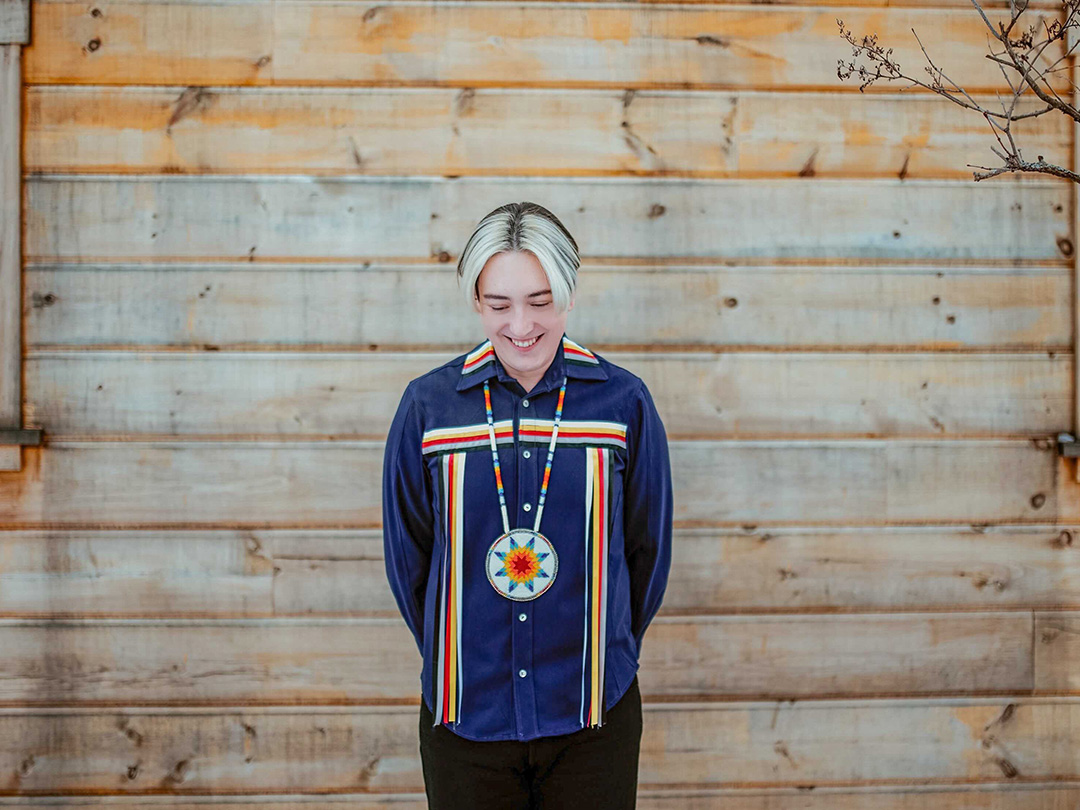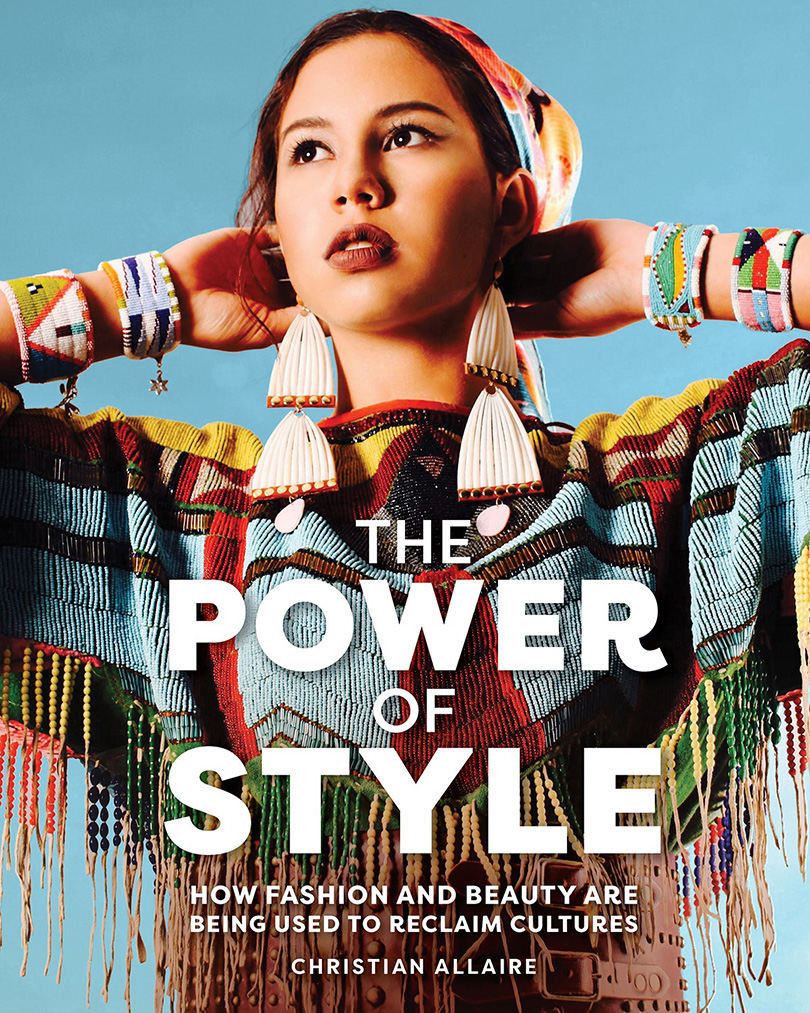Q&A with Christian Allaire, RSJ '14, author of "The Power of Style"

When he was a fashion-obsessed Ojibwe teen, Christian Allaire (RSJ ‘14) rarely found people who looked like him in movies or fashion magazines. In his first book, The Power of Style: How Fashion and Beauty Are Being Used to Reclaim Cultures (external link) he explores how style is more than the clothing we wear: it represents self-expression, representation, and transformation. His book includes chapters on high heels, ribbonwork, cosplay and hijabs, and connects fashion with history, culture, politics and social justice. Written for a YA audience, it is a beautiful read for all ages.
Allaire is a Fashion and Style Writer for Vogue.
What motivated you to write The Power of Style?
Growing up, I rarely saw my Indigenous culture being covered in the fashion industry. As a youth, that was a confusing experience; it made me feel invalid or inferior, that my cultural garments were not as beautiful as, say, those by high-fashion labels. I wanted to create a book that empowers youth to recognize their own cultures and experiences are beautiful, and how something like style can be the perfect medium to embrace that and to share that with others.
Why did you decide to write it for a YA audience?
I think youth are the ones who need to hear this message the most. Kids are like sponges; they often want to wear what their friends or favorite stars are wearing. It can be easy to be peer-pressured. But hopefully, in reading this, they can feel empowered to stay true to themselves and to proudly wear their cultural garments, and to not shy away or be embarrassed by them. That was certainly the case for me, and had I read a book like this in school, I maybe would have realized just how special Indigenous regalia is—and how there are other people like me out there!
You’ve mentioned that initially, you thought you would focus on Indigenous fashion for your book. What made you decide to expand your focus to include other cultures?
I realized in my research that, no matter how different we are on paper, and no matter what our cultural background is, we all go through the same human experiences. We have all felt that the fashion industry has, at one point, made us feel less beautiful—we have all felt not seen or heard. So I wanted to open it up and hear from people of all different backgrounds, and to show that we all are able to overcome this past feeling of inferiority, and to be proud of ourselves once again!
What advice would you give to students or journalists who want to write respectfully about cultures that aren’t their own?
Research, research, research. Know the context of the thing you are writing about, and when you think you have a good idea, research more. Even in my own work, I am by no means an expert on all cultural fashion, so in order for me to properly write about it and capture it, I really need to interview many people from that community. I would say, also give the platform to people of the culture you are writing about: Nobody knows better about those experiences than people who have lived it. Allow them to tell the story.
What was the most interesting thing you learned during your research for The Power of Style?
I was really quite fascinated by the cosplay chapter I wrote. You think of cosplaying at, say, Comic-Con, and you think it's an opportunity to unleash your creativity—and that's true, but there are also all these strict rules about a) not being able to portray characters of a different colour B) of a different size. It's absurd! The whole point of cosplaying is to step outside of your normal self and to dream, and yet here are rules saying you need to essentially dress up as someone who looks like you. But I love that there is a whole crop of cosplayers who are rebuking these rules and doing it their way.
How did your culture and family influence your interest in fashion?
I grew up on Nipissing First Nation, so I didn't really have access to anything high fashion. I think my love of style stems from my community and seeing beautiful regalia at powwows or community events. My sister is a jingle dress dancer and my mom/aunts/grandma were all sewers, so things were always being made around the house. I would see these beautiful, handmade cultural garments being made, and made with such purpose and meaning. It's a super special design process and I fell in love with the making-of process of clothing.
What advice would you give to young people, particularly BIPOC young people interested in fashion journalism or design?
I would say the fashion industry still needs a lot of writers who want to champion BIPOC/emerging talent. There are so many cool artists out there who don't have their story told, and we need young creatives to have that passion to want to spotlight them. So go for it—we need you!
What has the initial response been like to The Power of Style?
I have been blown away by the response, hot only from the Indigenous community but from all sorts of communities. People telling me that they feel seen and heard, or that they have read it to their children and taught them about some of these other cultures. My only hope is to educate and so for people to feel compelled to share this book with others is a real dream.
What do you hope readers take away from The Power of Style?
I did this for kids first and foremost, so I would be happy if there is one teenager out there who reads this and thinks, okay, maybe my culture is cool. Maybe I should be proud. There are many cool people in the book who are proudly rocking their roots and I hope it inspires others to do the same.
